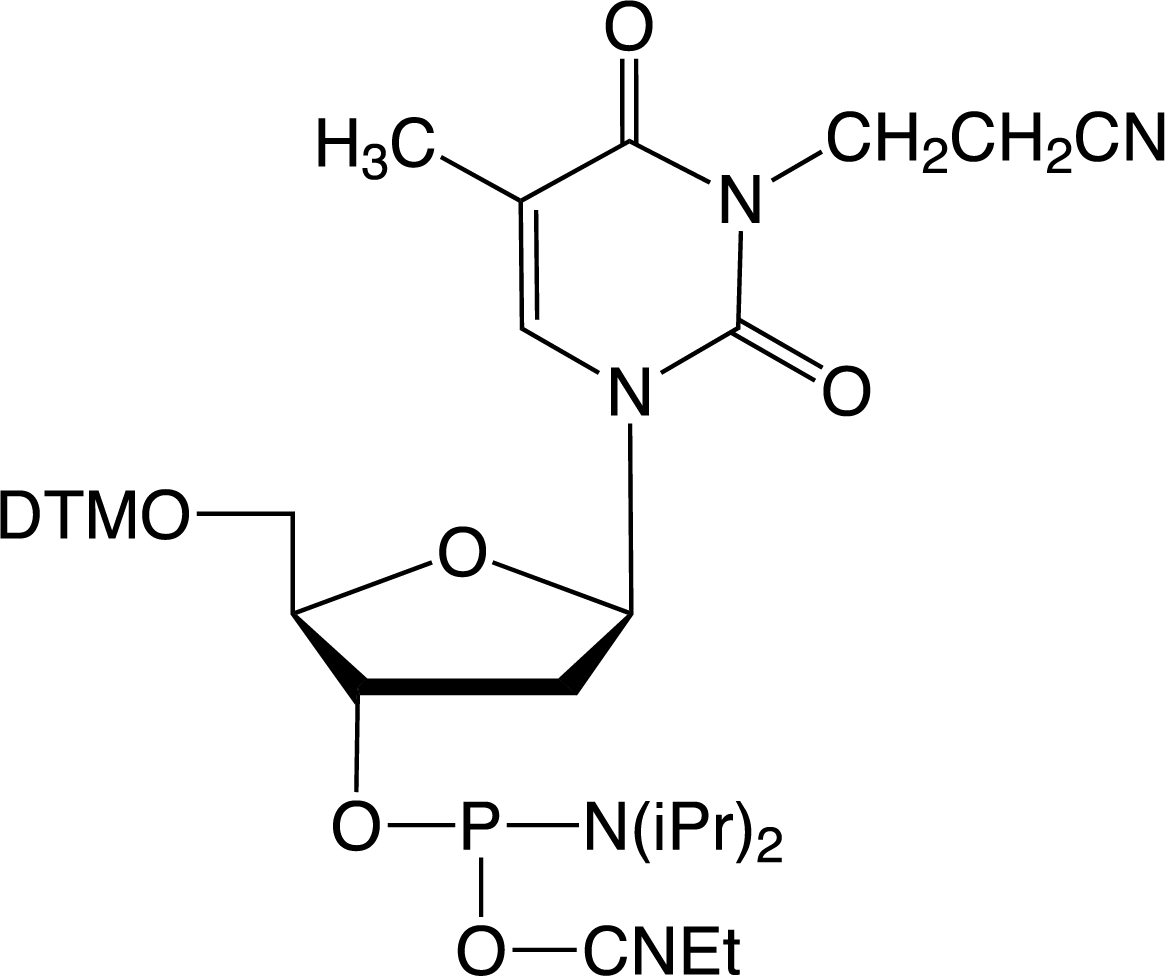
Catalog Number: 10-1531-xx
Description: N3-Cyanoethyl-dT
5'-Dimethoxytrityl-N3-(2-cyanoethyl)-2'-deoxyThymidine,
3'-[(2-cyanoethyl)-(N,N-diisopropyl)]-phosphoramidite |
| Formula: C43H52N5O8P |
M.W.: 797.88 |
F.W.: 357.26 |
Diluent: Anhydrous Acetonitrile |
| Coupling: No changes needed from standard method recommended by synthesizer manufacturer |
| Deprotection: No changes needed from standard method recommended by synthesizer manufacturer. |
| Storage: Freezer storage, -10 to -30°C, dry |
| Stability in Solution: 2-3 days |
L
THERAPEUTIC NUCLEOSIDES
Cytosine Arabanoside (Ara-C) is an anti-viral drug which has achieved limited use. Its effect on DNA structure and activity can be investigated by incorporating it into synthetic oligonucleotides.
Zebularine (pyrimidin-2-one ribonucleoside) is a cytidine analogue that acts as a DNA demethylase inhibitor, as well as a cytidine deaminase inhibitor. This structure is very active biologically and Zebularine is now used as a potent anti-cancer drug. A 2’-deoxynucleoside analogue of Zebularine, 5-methyl-pyrimidin-2-one, 2’-deoxynucleoside, has been used to probe the initiation of the cellular DNA repair process by making use of its mildly fluorescent properties. This combination of biological activity and fluorescence properties would make 5-Me-2'-deoxyZebularine a strong addition to our array of nucleoside analogues.
Cytosine-5-methyltransferases are found in everything from archaebacteria to mammals and when the regulation of cytosine-5-methyltransferases goes awry, cancer can result. The mechanism of action for this family of enzymes involves attack of a cysteine thiol group on the C6 position of cytosine, leading to a transient dihydrocytosine intermediate, which then facilitates the nucleophilic attack by C5 on the activated methyl group of the S-adenosyl-L-methionine cofactor. As with many enzymes, the intermediate can be trapped using a suicide substrate and 5-fluoro-cytosine has been used extensively in this role. An alternate strategy is to use a transition-state mimic that binds to the active site with high affinity. An excellent candidate was found in 5-aza-5,6-dihydrocytosine. Despite not being covalently bound to the enzyme, it was found1,2 to be a more potent inhibitor of cytosine-5-methyltransferases than 5-fluoro-cytosine. 5-Aza-5,6-dihydro-dC is compatible with standard oligonucleotide synthesis and deprotection conditions and is an excellent tool for use in methyltransferase research.
If you cannot find the answer to your problem then please contact us or telephone +44 (0)1954 210 200